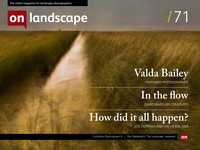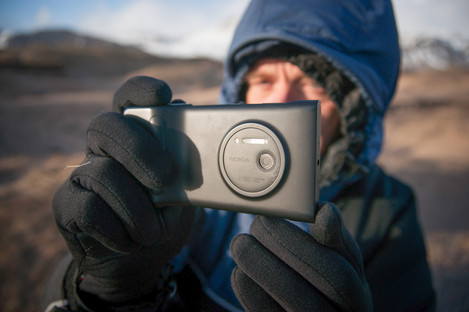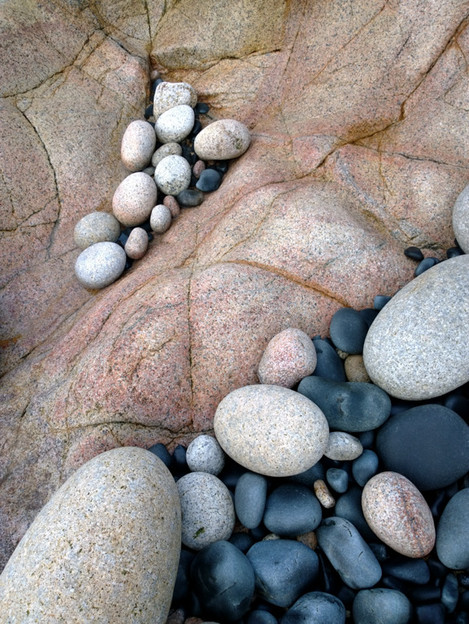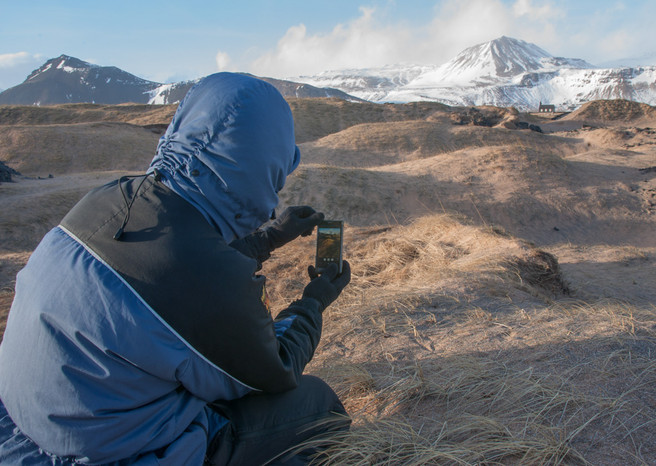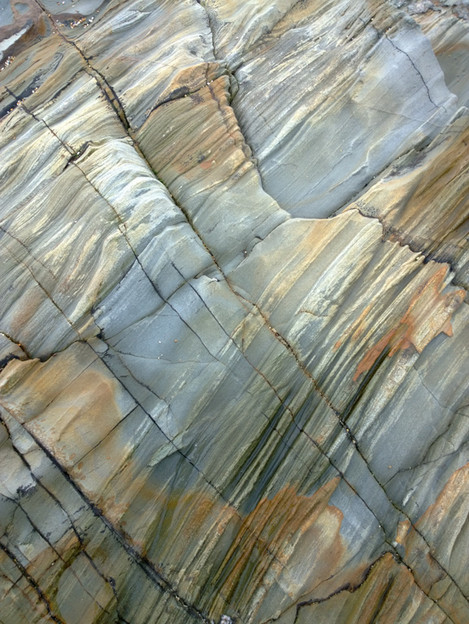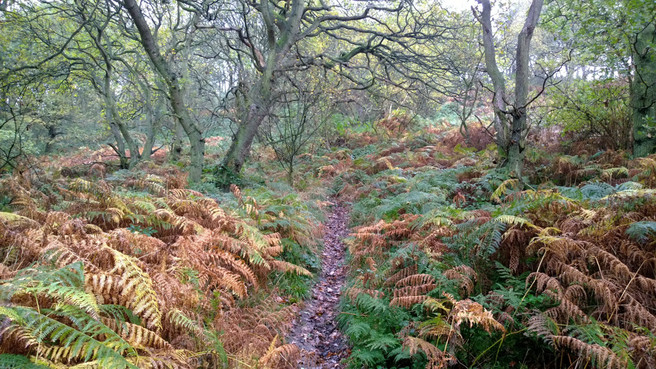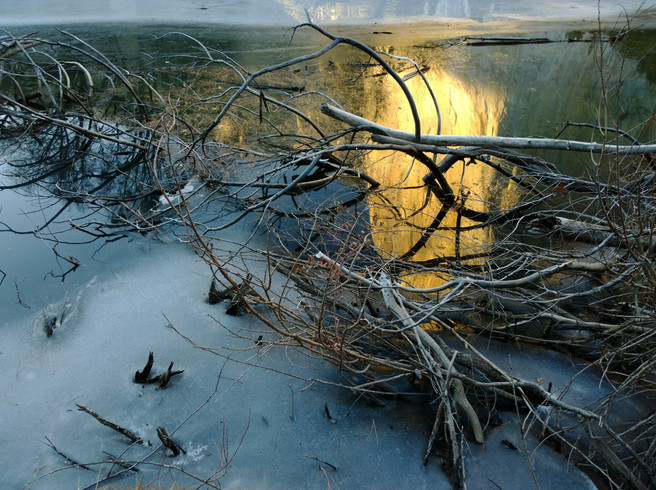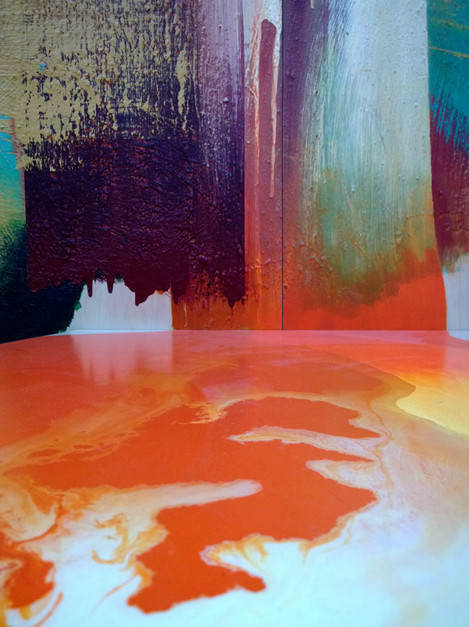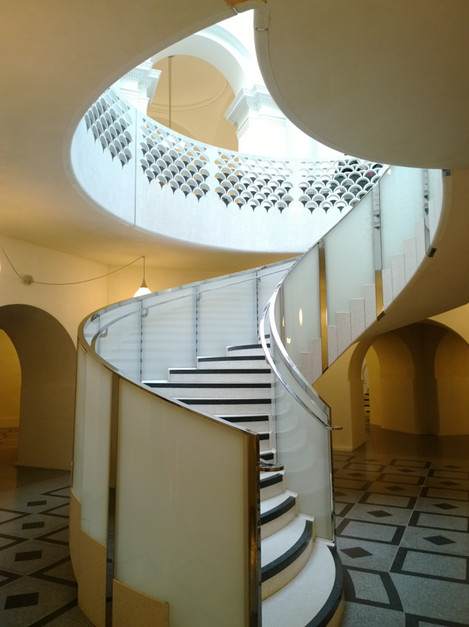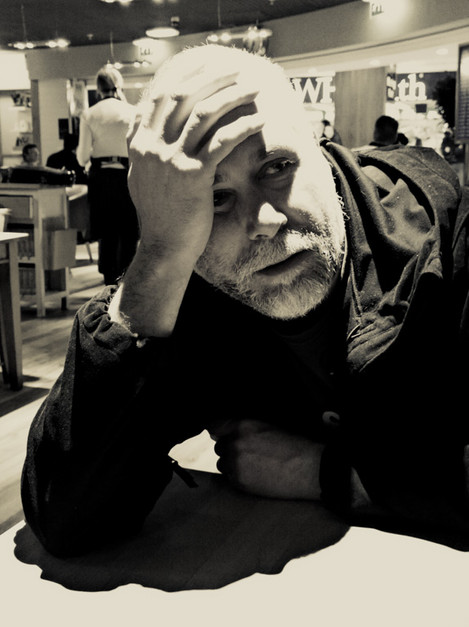Joe Cornish shares a voyage of discovery with a phone.....
Around ten years ago, when (from my point of view) shooting 5x4 inch film was the only show in town, I was one of a number of photographers asked to participate in a BBC series about digital photography. The presenter, Tom Ang, asked me to use a phone, to see how I got on with it and how I could apply it in daily use.
It was embarrassing in retrospect; I shamed myself by completely failing to adapt to the challenge of the new-fangled 2-megapixel white wonder (I don't recollect the make or model). A 4-second delay to the press of its 'shutter' was especially frustrating, and on its small screen the colour and general quality hardly inspired the imagination. I tried everything I could think of, including shooting from the roof of my camper van, using a tripod designed for a 10x8, and in the hunt for novel viewpoints I also managed to drop it off the side of the pier at Whitby harbour, after which, to my astonishment (and regret) it continued to work normally. I was reminded of this incident by anyone who had caught the series for years afterwards. Admittedly at this point I was still wrestling with Photoshop, and then only with 300+mb files, so my antipathy for this daft digital phone camera gimmick was almost limitless. How could anything this small be any good, and besides, why put a camera on a device designed for spoken conversation…? Obviously, it'll never catch on, I thought.
So there, I will never make a living foretelling the future, and furthermore it is no secret that I am neither scientist, engineer or technocrat. I remain somewhat dependent on my dear friends with brains and phds (the Geekeratti?) to help me out as each wave of technical revolution unfolds. It was with huge reluctance that a couple of years ago I acquired my first smart phone (mainly because a client asked me to photograph with one as part of a commission). This was an HTC Desire S, and while it had a hopeless camera, the myriad benefits of smart phonery penetrated even my dense skull. When the time came for an upgrade last year there was a new option, one that had the laughable theoretical resolution of 40 megapixels. Part of me was thinking, be sensible and swim with the iPhone tide. But some rebellious streak still wants to be different, and having established that no-one I know (in the photo community) used either Nokia or Windows based phones I took the plunge and ordered one. The what? The Nokia 1020.
Before proceeding further, a little background diversion may be helpful… As the years have gone by and digital photography has come of age, many different work-flows have evolved. My own is now built on the use of smaller cameras for 'sketching' a way into seeing an idea, and always working hand-held to allow things to unfold without the inhibiting presence of the tripod. Once I am reasonably sure I have something I want to try “seriously”, then the tripod and technical camera take over. This remains parallel with my previous 5x4 film method of using a hand-held Linhof zoom finder. I particularly like LCD live view for visualisation, so smaller enthusiast models (like the Panasonic LX or Canon G series) are ideal. The latest Canon G-16 plays this role to perfection, with a well-balanced size/direct controls/lens range compromise. Of course, that really is a matter of personal choice. Sometimes I prefer my hand-held small camera images to the “finished” high res work, as they often retain the freshness of the idea and the quality of light which was just right in that moment. And so a certain obvious pressure began to build… if the sketch is occasionally the best photograph, should the sketching camera not also be capable of giving at least reasonable quality prints (print remains my preferred way of sharing a picture)?
The small cameras do, to be fair, produce good prints up to a point, but I have also toyed with something a bit bigger, namely MFT (Panasonic), and also APS-c in the shape of the Fuji XE-1. I rate the latter very highly, but no one could claim this is a pocket camera, even if it does happen to be more compact than its DSLR rivals.
All of this in the light of discussion with friends – something every photographer accepts – that the best camera is the one you have with you. Most of us invariably carry a phone, which is why photography, if there is such a word, is such a thriving field. The HTC had never inspired me photographically. It was certainly my hope that the Nokia 1020 could do so.
Immediately after its arrival, I ordered one of the battery grips that Nokia has designed specifically for this model. In black, this gives the unit the rather charming appearance of a mini polaroid back. It also extends the battery life a lot and makes the phone easier and more secure to handle and shoot with. It even has a tripod threaded base, although as yet I have avoided the temptation to use it this way.
There is a bundled app called Pro Cam which, incredibly, does offer a handy degree of manual control. I can't honestly say that this is a piece of design genius, especially as the whole thing is touch screen operated and therefore not that well suited to dark or damp conditions, and is also designed with graphics the size of which will challenge all males of 45+ who have lost their glasses (again). Nevertheless, with a bit of jiggery-pokery, these controls do allow the user genuine input.
Now I am no expert in smartphones, but to me, the screen is simply phenomenal. I believe other independent reviewers say that Sony's are better, which may well be true, but I just love the size and brightness of the Nokia's screen. The response provoked when others see the pictures on screen is almost invariably 'Wow!' and I am not kidding myself that's because the photos are great, its a case of the technology impressing almost all comers. It is a big phone and some might find it bulky to use, but this does make it easier to hold. And isn't making a phone call with a polaroid back almost so daft that it's cool? The shutter button built into the battery grip also works very well.
In standard set-up, the camera saves two versions of every picture (the two are only evident when they are uploaded to the computer) called pro and high res jpeg. The former is in fact down-sampled versions of 2592x1936 pixels, storing at anything from 1.4 to 4.5 megabytes. The high res files are 7136x5360 pixels, an astonishing figure. And if you have managed to keep your hands steady, and the auto iso has selected 100 (this can also be selected manually) the images can be really quite clean and packed with detail. By no means is it time to throw away the Nikon D800E (and equivalent) for all sorts of other reasons, but, for what it does well image quality is, in my humble opinion, very good. Certainly good enough to print.
Due to its inherent quality, Nokia has now provided a raw file capture app. So far I have failed to figure out how to download it (I had no such problem finding the Nokia photo transfer app, essential for importing stuff from your phone or exporting portfolio jpegs onto it). While dng files from 1020 have an obvious appeal, there is also a danger for me that this will take away the fun part of the exercise. That is partly why I have resisted the temptation, so far, to mount the phone on a tripod, as I did all those years ago. It certainly didn't work for me then, and that was at least partly because I was probably taking it all far too seriously.
So, since I am accepting the jpeg model for shooting, for now anyway, it is obvious that clipped highlights, the jpeg curse, is a major challenge if an image deserves printing. DR is pretty poor compared to my other cameras, and clearly, you would expect this to be its Achilles heel. In spite of this the quality of the files, if highlights are preserved, is highly respectable, albeit on the contrasty side. That punchiness though is the default setting of most consumer digital devices for the simple reason that it is immediately appealing. The auto white balance is good. Mostly I love the results I get from it.
I have played with some of the files in Photoshop and they respond quite well to the normal inputs, although this is still not like using a contemporary pro camera in the post production stakes (and I didn't expect that). As someone who still harbours some resentment for the lost time and freedom of film days when all we did was done in camera, shooting jpegs on the Nokia is all about getting it there and then in the moment. I'd prefer to do no post processing unless I had to. So all the examples included in this article are the low res (“Pro”) files, un-retouched, straight from the camera.
The great Harry Callahan, one of my favourite historic photographers, described his Hasselblad SWC (38mm Biogon) photography as “Monkeying around with space”, and it is that playful attitude that the Nokia has really encouraged in me. It is also the default family snapshot camera, preserving memories of friends and family which I might previously not have bothered with.
Its wide angle (28mm equivalent lens) is clearly not ideal for everything, but it does encourage getting close (including to just under life size on the phone screen), often resulting in images that are surprising and striking. Depth of field is huge, although focus effects are evident at closer distances. The Zeiss lens is a prime, so zooming is digital-only. Effectively, it is cropping in the camera. This means that, at the pixel level, the quality of the files remains the same in theory, but the files get smaller. The high res version of the file simply has fewer pixels in it. This obviously gives an incentive to use the prime lens setting whenever possible. Nevertheless, on those occasions when some cropping makes the picture better then it works fine, accepting the fact that you are effectively diminishing the image size in camera.
While it is the functional carry everywhere device I had hoped for, it is really much better than that. So much so that I have been reminded of the pleasures of non-landscape photography, especially staircases, once a long-standing obsession.
This article may be a bit thin on detail about the actual image quality of the Nokia 1020. I make no apology for that because there are specialist sites that will explain its particular strengths and weaknesses already, here for instance…
The main thing for me is the fun factor, the wonderful screen quality, and the lack of inhibition engendered in using a phone.
Oh yes, and it texts a decent message (the predictive text is brilliant) and makes quite a handy telephone as well. Who'd have thought it?
That is how it happened. Where will it all end? If you can foretell the future better than yours truly, then answer on the back of a postcard please to Tim Parkin. We'll put them in his film freezer (if he has room), unwrap them in another ten years and see which of you came closest. And the winner's prize? How about a partially used HTC Desire S… Or if you prefer, ten sheets of Velvia 10”x8”?

